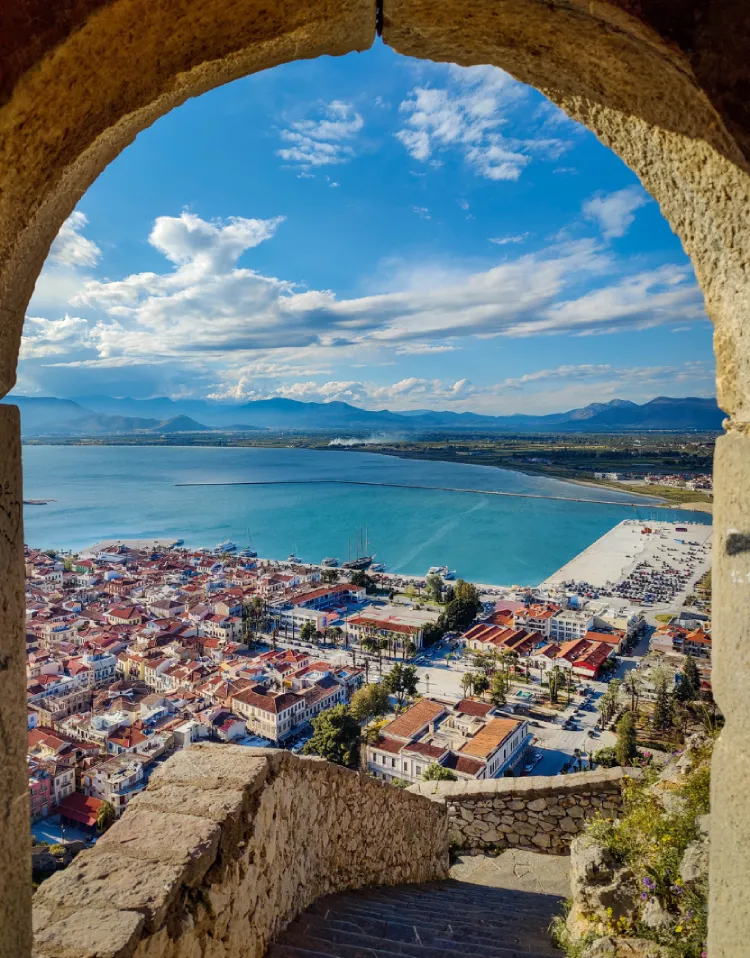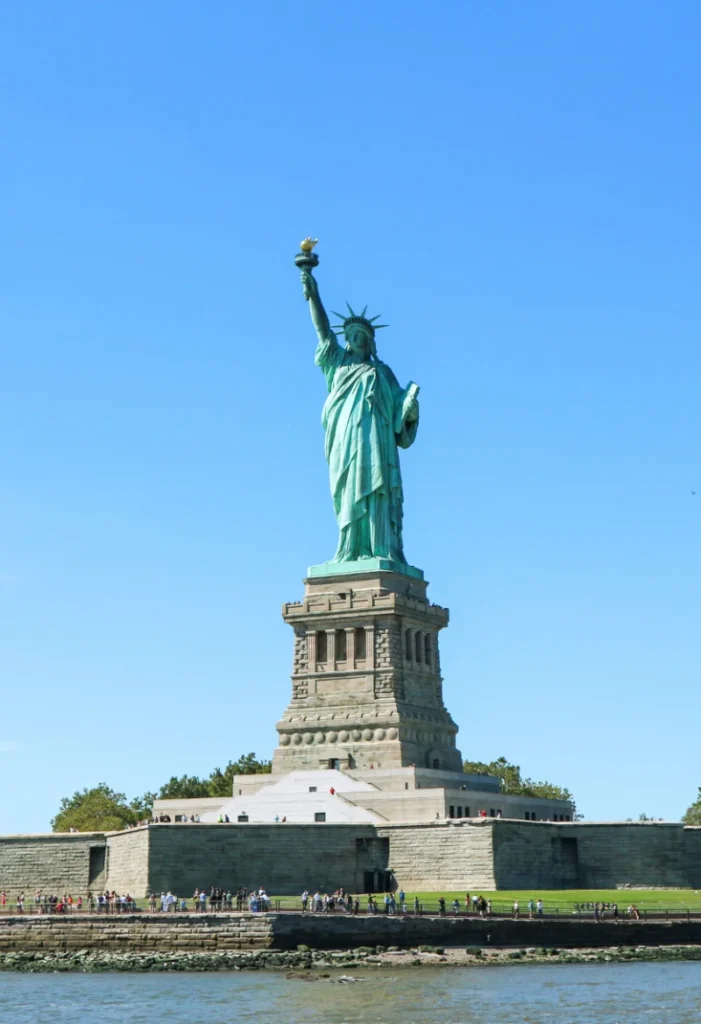Generally, you can travel any time of the year around the world. However, not all times of the year may be suitable for you to travel; there are many factors at play. The alignment of seasons with your preferences may be the first issue. I prefer different seasons for travel. Besides, different people like different kinds of pastimes. Sometimes, it depends on the closure of the educational institutions, while it also depends on the vacation of the spouse.
Here, we will discuss the best time of year to travel globally in different regions, like Europe, the USA, the Middle East, North Africa, South Africa, and the Asia Pacific. We’ll also look at the three main travel seasons — high season, low season, and shoulder season — so you can decide what suits your style.

Table of Contents
Travel Seasons Explained
Each travel destination has its tourist seasons. These seasons are usually categorised into high (peak) season, shoulder season, and low season. Deciding on the travel time of the year will normally depend deeply on the season when you wish to travel. Here are the pros and cons of each tourist season for you.

High season for travelling
High season is the busiest period for travel. This season is considered an expensive season. It is also known as peak season. In this season, the nation enjoys the best weather. And for this, crowds throng to the tourist places despite facing expensive prices. However, it also has negative sides. Popular personalities always try to skip the high season due to the huge gathering of tourists.
However, the peak season is the best time to travel for you, depending on your destination and vacation. You can enjoy the best weather. It is a chance to meet so many visitors from different nations. In this season, you can get the best service from the hospitality staff.
It is noted here that the country will determine the optimal weather.
At a glance:
- Pros: Pros: Lively atmosphere, many activities, full services, and chances to meet travelers from around the world..
- Cons: Higher prices, large crowds, and limited availability at top attractions.
Low season for travelling
Low season comes as the opposite of high season. In this season, you will see fewer tourists and lower prices. However, it also brings hostile weather, a low volume of tourist activities, and inadequate accommodation and transport facilities. You may face the fact that some locations have closed resorts and hotels. You will witness that the hospitality staff are less attentive. Flights may be limited and additional between.
Low season can be a peaceful holiday for those who are keen to deal with different weather. Popular landmarks may also experience fewer crowds during this time.
At a glance:
- Pros: Lower costs, fewer tourists, and a chance to see popular landmarks with no crowds.
- Cons: Some hotels and attractions may close, transport options can be limited, and service levels may be reduced.
Shoulder season for travelling
Shoulder season is the time, which exists between spring and autumn. Visitors generally overlook this season. But you will be astonished to learn that it is a fantastic time to visit tourist attractions. Another surprising fact is that you can save a lot of money by travelling during this season. In the busy tourist spots, you will experience fewer crowds and lower expenses. However, you may indeed face unpredictable weather patterns during the shoulder season. Despite having some negative issues, the shoulder season is the best time for any traveler to travel on a low budget.
At a glance:
- Pros: Fewer crowds, lower costs, and good weather in many regions.
- Cons: Weather can be unpredictable; you may face sudden rain showers or shifting temperatures.
Time of Year to Travel Globally by Region in Perfect Destinations
During unique tourist seasons, travel to the best destinations. Each country has its unique holiday seasons. To plan your next trip, you may explore these destinations and their best tourist times. In such a way, you can make sure that you have a memorable experience throughout the year.
Travel time to go to Europe

Summer is the high season for travel in Europe. The hottest months are July and August. School holidays take place in the summer. In Europe, winter is the low season. There are limited daytime hours, which are a main consideration for travellers. However, it offers the best in accommodation and experiences. You may get wonderful experiences and travel deals in Western Europe during winter.
You will witness snow, rain, or sunny days during shoulder season weather in Europe. However, it depends on the destination you are paying a visit to. You may enjoy the holidays with the best experiences.
Spring and autumn, blooming gardens in April or golden vineyards in October make these months magical for travelers who enjoy culture without the crowds.
Travel time to visit the USA

The USA consists of 50 states. The weather and seasons of many states vary from one another. It has a diverse climate. Summer is considered the most popular season to visit the USA. Many travellers from around the world throng to the vast country during summer to witness the Statue of Liberty, Central Park, and national parks like Yellowstone and Yosemite.
The days across the country are getting warmer from June to August. Hot and tropical weather is seen in southern states like Texas and Florida. Warm days and cooler evenings are much enjoyed in New York, Washington, and other northern states.
Winter prevails from November to March. However, it varies across states. Mild temperatures are felt in southern states, while you will experience wet and snowy conditions in the northern states.
Ski resorts and warmer getaway spots can be enjoyable during the low season. You can enjoy winter events and festivals in the bigger cities like Chicago and New York, embracing the cold weather.
Fewer crowds and milder temperatures are seen during the shoulder season in the USA. The season is considered the ideal time to visit American landmarks. In the New England region, you will find that spring brings blossoms. However, fall is remarkable at this time.
In New York and Washington, you will find green spaces during the shoulder season. You can enjoy sand and surf opportunities in Hawaii.
Best time of year to travel to the Middle East: Jordan and Turkey

In the Middle East, the shoulder season exists between June and August. It is a nice time for water enthusiasts in countries like Jordan. Visitors flock to the beaches of these countries during the shoulder season. They enjoy the lovely weather and seaside attractions.
Skiing and snorkelling are very popular amongst tourists. All try to move close to the beaches to get relief from the scorching heat.
In the Middle East, winter is regarded as the low season. However, many tourist opportunities, such as scenic skiing and attending the Whirling Dervish Festival in Turkey, are available in the winter. In Jordan, you can take pleasure in hiking during winter, especially if dressed warmly.
Excellent sightseeing opportunities prevail in the shoulder season, offering fair temperatures. It is the best time to witness the ancient heritage of inland towns and cities in Turkey. There is no difference between high season and shoulder season in Jordan. You will get better opportunities to enjoy popular landmarks at lower prices.
Travel time to go to North Africa: Egypt

Egypt’s high travel season exists between October and February. Warm, comfortable days and cold nights are very much a pleasure to the tourists. For this period, you should keep in mind large crowds and high prices everywhere.
May and October are counted as the low season. Extremely hot temperatures prevail during this time, which is health risky for young children and older travellers. However, there are many recreational activities available for summer travellers. Scuba diving in the Red Sea, visiting Cairo’s air-conditioned museums, and visiting the pyramids are some glaring examples of fun work.
Shoulder season prevails from February to May. At that time, the weather is pleasant, but you can face occasional fickle weather. The “Khamsin wind” season brings hot winds from March to April. The wind disturbs the desert sands and forms a risky atmosphere.
This season is regarded as less popular. However, it is suitable for a peaceful visit. Despite the extreme heat, Egypt offers great fun opportunities for visitors. Scuba diving, exploring Cairo’s cool museums, and visiting the pyramids are worthy examples.
Travel time to visit South Africa

The summer months (December to February) are considered high season in South Africa. Pleasant weather exists in the country all year round. Outdoor adventures and activities delight the visitors. Hiking in the Knysna woods will make you happy. Visiting an ostrich farm in the Karoo or surfing in the Eastern Cape are also activities to enjoy during a stay in the country at this time. Dry and hot weather remains in Cape Town and its surrounding areas. On the other hand, pleasant and temperate weather is seen in Gauteng and safari destinations.
The southern hemisphere winter (June to August) is regarded as the low season for the entire country. It is cooler than other times of the year. Pleasant days and chilly nights during this time will give you special thrills. Plenty of things to do and many places to visit are available in the major cities. Summarily, winter is a great time to visit.
Mild weather prevails during the shoulder season in South Africa. The mild weather of spring and autumn feels like full-blown summer in Europe. However, the weather can be changeable. In-between seasons are also perfect for animal encounters. Safari destinations like Kruger National Park contain more wildlife sightings due to calving species.
Travel time to go to the Asia-Pacific countries

Travel times in Asia-Pacific countries vary from region to region.
December to February is considered the ideal time (High Season) to visit Southeast Asia. During this time, the temperature is pleasant, the humidity is low, and the rainfall is limited. It is the right time for you to explore beaches, cities, and outdoor activities.
April to May and September to October are the shoulder seasons in Southeast Asia and the South Pacific. A good balance of weather and fewer crowds will make you pleased during these months.
You should avoid the monsoon season in many regions, as they are considered the low season. This period, particularly from June to August, brings heavy rainfall and humidity.
Travel time to move to Indonesia and the South Pacific

The best time for travelling in Indonesia and the South Pacific is April to October. The best weather prevails at this time for moving here and there. You should skip the monsoon season from November to March due to heavier and more consistent rainfall.
Travel time to go to Bhutan

Spring exists between March and May. Rhododendrons bloom then. Festivals take place everywhere. Autumn consists of September, October, and November. Clear skies and pleasant temperatures will favour you for a happy tour.
You must avoid the summer season, beginning in June and ending in August, for monsoon rains and landslides.
Travel time to go to Tibet and the Himalayan kingdoms

In Nepal, springtime is witnessed between April and May. On the other hand, the autumn season exists between September and October. Pleasant weather and clear skies are enjoyable in both spring and autumn seasons. The monsoon stays between June and August, and this time is not ideal to tour the country due to heavy rains and landslides.
Conclusion
Every destination has its own rhythm, shaped by weather, culture, and seasonal celebrations. The best time to travel depends on what you care about: weather, crowds, cost, or special experiences. Whether you want Europe’s summer sun, Rockies skiing, temple visits in Southeast Asia, or a South African safari, pick the season that matches your priorities.
The best way to plan? Decide what kind of trip you want first — vibrant and social, peaceful and slow, or adventurous and wild — and then let the seasons guide you. The world is always ready to be explored, but the right timing makes all the difference.
FAQs
What is the cheapest month to travel internationally?
Generally, the cheapest months are during the low season — often January, February, and September. Prices for flights and hotels drop when demand is low, especially right after the holiday rush.
What is the difference between high season and shoulder season?
High season: Best weather, highest prices, and biggest crowds.
Shoulder season: Transition months with decent weather, fewer tourists, and more affordable prices — a great balance between cost and comfort.
Which season is best for avoiding crowds?
The low season has the fewest crowds, but the weather may not always be ideal. If you want fewer tourists without compromising too much on weather, the shoulder season is your best bet.
Is it safe to travel in the low season?
Yes, but be prepared for limited services — some hotels, resorts, and transport options may not operate at full capacity. Always check in advance.
Can I still get good deals in the high season?
Yes — but you’ll need to book far in advance. Early reservations for flights and accommodations often secure better rates, even in peak travel months.
What’s the single best travel season worldwide?
There isn’t one “best” season globally — it depends on your destination and what you want to experience. That’s why understanding high, low, and shoulder seasons is so important.